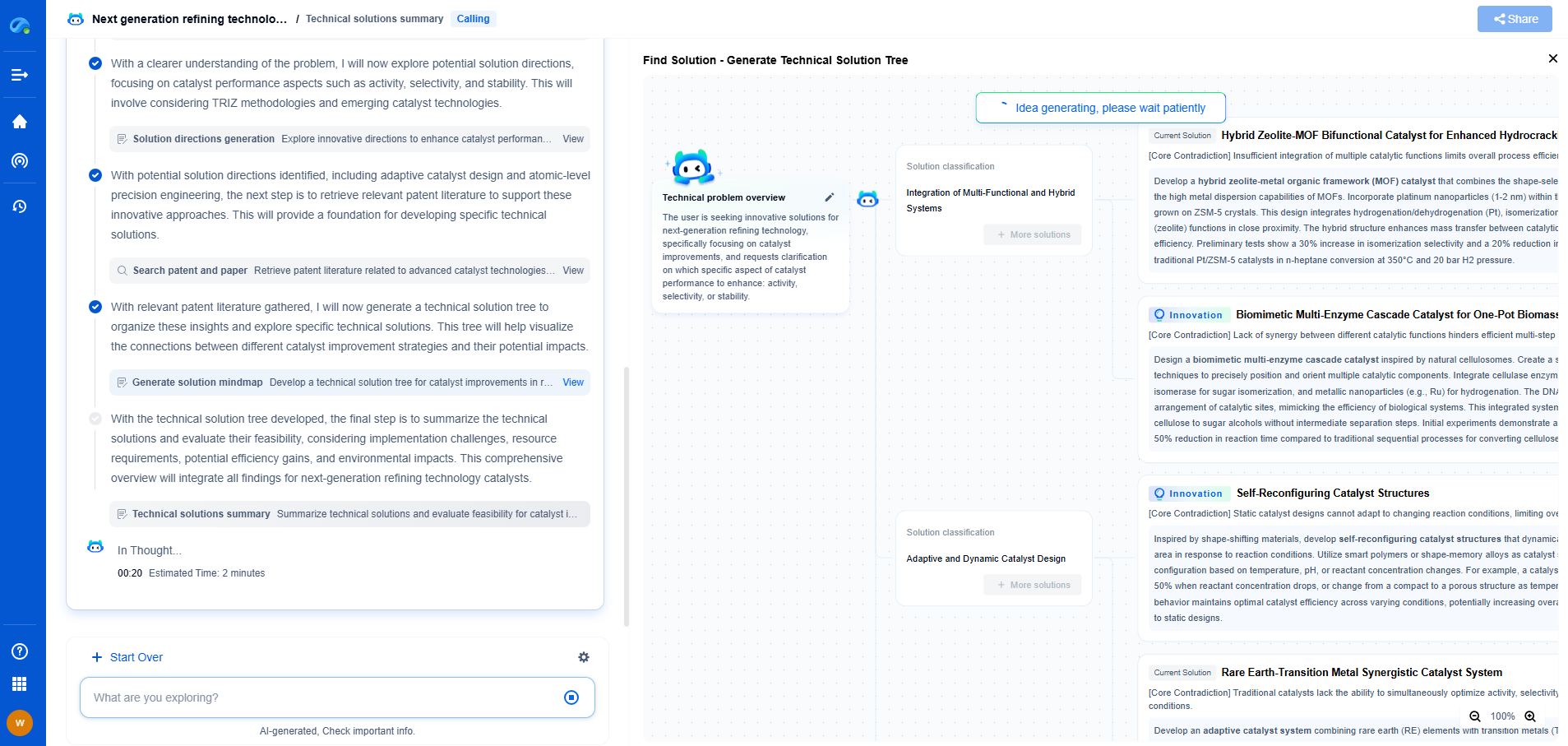How Dynamic Spectrum Sharing (DSS) Enables 4G/5G Coexistence
JUN 27, 2025 |
In the fast-paced world of telecommunications, the transition from 4G to 5G networks has been a significant milestone. However, the coexistence of these two technologies presents challenges regarding spectrum allocation and utilization. Dynamic Spectrum Sharing (DSS) emerges as a pivotal innovation to address these challenges, enabling seamless integration and coexistence between 4G LTE and 5G NR (New Radio) technologies.
Understanding the Need for DSS
The deployment of 5G networks requires access to a wide range of frequency bands. Traditionally, spectrum allocation involved dedicating specific bands to particular technologies, but this method can be inefficient and costly. With 4G still playing a critical role in global connectivity, completely phasing it out to make room for 5G is not feasible. DSS provides an intelligent solution by allowing both 4G and 5G to share the same spectrum dynamically. This approach maximizes spectrum efficiency and facilitates a smoother transition to next-generation networks.
How DSS Works
Dynamic Spectrum Sharing utilizes advanced algorithms and technologies to allocate spectrum resources between 4G and 5G networks on-demand. DSS operates by adapting the spectrum usage based on real-time network conditions, traffic demand, and user requirements. This flexibility ensures optimal performance and resource allocation, avoiding the rigid limitations of traditional spectrum allocation methods. By leveraging technologies like Carrier Aggregation and Multiple Input Multiple Output (MIMO), DSS can dynamically switch between 4G and 5G transmissions without compromising service quality.
Advantages of DSS in Network Coexistence
One of the primary benefits of DSS is the significant cost savings in network deployment. By allowing 4G and 5G to coexist on the same frequency bands, telecom operators can avoid the expenses associated with new infrastructure and frequency acquisitions. Additionally, DSS enhances the user experience by providing consistent connectivity and seamless transitions between 4G and 5G services. This is particularly crucial in areas where 5G coverage is still expanding. Network efficiency is also improved as DSS optimizes the use of available spectrum, ensuring that resources are allocated where they are needed most.
Challenges and Considerations
Despite its advantages, implementing DSS comes with its set of challenges. Compatibility between different network equipment and technologies must be ensured for DSS to function effectively. Moreover, the complexity of managing dynamic spectrum allocation requires sophisticated network management systems and expertise. Operators must also consider regulatory constraints and spectrum policies that vary across regions. Addressing these challenges is essential to fully realize the potential of DSS in enabling 4G and 5G coexistence.
Future Perspectives of DSS
The adoption of DSS is expected to grow as the demand for 5G connectivity increases globally. As technology evolves, DSS may pave the way for more advanced spectrum-sharing methods, further enhancing network efficiency and performance. Innovations in artificial intelligence and machine learning could play a pivotal role in optimizing DSS functionalities, leading to more intelligent and adaptive network environments. Additionally, DSS could become a key enabler for other wireless technologies, fostering a more harmonious and integrated digital ecosystem.
Conclusion
Dynamic Spectrum Sharing represents a transformative approach in the telecommunications industry, addressing the challenges of 4G and 5G coexistence. By dynamically allocating spectrum resources, DSS enhances network efficiency, reduces deployment costs, and improves user experiences. As the demand for high-speed connectivity continues to grow, DSS will play an increasingly vital role in shaping the future of wireless communication. Embracing this technology will be crucial for operators seeking to thrive in the evolving landscape of mobile networks.
Unlock Next-Gen Innovation in Communication Technology with Patsnap Eureka
The field of communication technology is evolving at breakneck speed—from 5G and satellite systems to next-gen wireless protocols and quantum communications. Staying ahead demands more than just information—it requires strategic insights, real-time patent intelligence, and a deep understanding of technological trajectories.
Patsnap Eureka, our intelligent AI assistant built for R&D professionals in high-tech sectors, empowers you with real-time expert-level analysis, technology roadmap exploration, and strategic mapping of core patents—all within a seamless, user-friendly interface. Whether you're optimizing signal processing designs, navigating 3GPP standards, or exploring IP strategies for IoT and 6G networks, Eureka helps you move faster, think deeper, and innovate smarter.
Try Patsnap Eureka today—and see how it can transform the way you work across the entire communication technology innovation lifecycle.
- R&D
- Intellectual Property
- Life Sciences
- Materials
- Tech Scout
- Unparalleled Data Quality
- Higher Quality Content
- 60% Fewer Hallucinations
Browse by: Latest US Patents, China's latest patents, Technical Efficacy Thesaurus, Application Domain, Technology Topic, Popular Technical Reports.
© 2025 PatSnap. All rights reserved.Legal|Privacy policy|Modern Slavery Act Transparency Statement|Sitemap|About US| Contact US: help@patsnap.com

